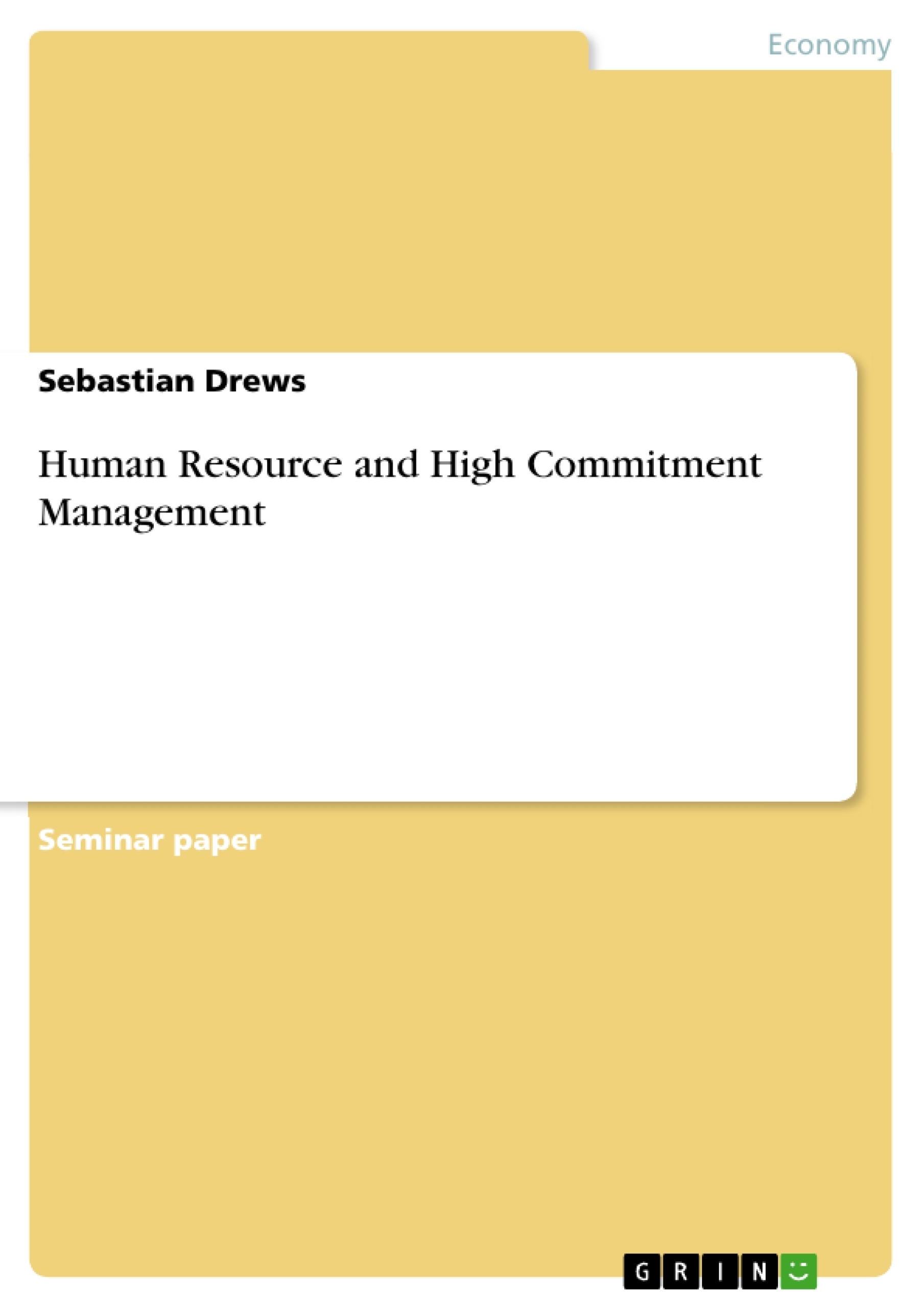Extrait
Table of Contents
1. Introduction
2. Definition of High Commitment Management
3. Why might organisations abandon HCM practices in tough economic times ?
4. The cases: Evaluation of HCM practices' failure and success
5. Conclusion
6. Literature and References
1. Introduction
Much has been written about High Commitment Management (HCM), high performance work systems, high commitment HRM or high involvement HRM. (In this work the term High Commitment Management, HCM, will be used for clarity reasons.) Despite that, a positive relation between HCM and organisational performance is almost undoubted, employees often feel that organisations abandon these practices in tough economic times. But is this true or might it be a problem of diverging perceptions? This work builds up the argument by reviewing the literature in chapter one and using the findings to define what HCM actually means. This part also provides insight into why the concept ought to work. Chapter two broadens the discussion by providing reasons why organisations might cancel HCM practices. Chapter three then assesses the concept of HCM against the reality of businesses and organisations, bringing together practice (chapter two) and theory (chapter one). Two case studies provide practical evidence. Chapter four draws a conclusion and summarizes the previous chapters.
2. Definition of High Commitment Management
The "Why"
Managerial interest in the concept begun to grow during the 1980ies when businesses were facing rising cost, shrinking productivity and dissatisfied workforces with high rates of absenteeism (Walton 1985). Well established (Tayloristic) control approaches seemed to have run out. Since then, increasingly high commitment approaches have been established. They increase organizational effectiveness by creating conditions, where employees become highly involved in the organization and work hard to accomplish the organization's goals (Wood, de Menezes, 1998). E. Whitener (2001, p. 517) writes that "organizations with high commitment systems experience greater productivity, financial performance, and effectiveness than organizations with low commitment or control systems."
The "How"
A lively debate is going on about how to actually achieve a committed workforce. There are two models in academic discussion and business practice: Best fit and best practice. Wood (1999, p. 373) illustrates the positions:
illustration not visible in this excerpt
Advocates of the best practice approach (e.g. Pfeffer 1998) argue that HCM outperforms all other systems in all contexts. They imply that only to implement all identified HCM practices, bears success. The followers of the best fit approach (e.g. Becker, Gerhart 1996; Fenton O'Creevy 1998, Youndt et al. 1996) are convinced that the set of applied HR practices needs to match the strategy of a particular firm. Success depends on the right choice of HR practices.
Marchington and Wilkinson (2008) have identified a set of HR practices that characterize HCM systems for both, best practice and best fit advocates. (Pfeffer 1998, Appelbaum et al. 2000, Guest 2001, Wood 1999a+b):
1. Employment security and internal labour markets
2. Selective hiring and sophisticated selection
3. Extensive training, learning and development
4. Employee involvement and participation: worker voice
5. Self-managed teams/teamworking
6. High compensation contingent on performance
7. Performance review, appraisal and career development
8. Reduction of status differentials/harmonisation
9. Work-life balance
According to Tomer (2001) HCM generally requires a certain mindset both from employees and employers, based on mutual trust and respect. He identifies the way how work is organised as one of the main foundations to HCM.
illustration not visible in this excerpt
- Citation du texte
- Sebastian Drews (Auteur), 2009, Human Resource and High Commitment Management, Munich, GRIN Verlag, https://www.grin.com/document/144138
Devenir un auteur






















Commentaires